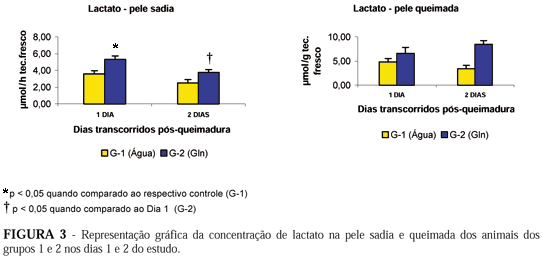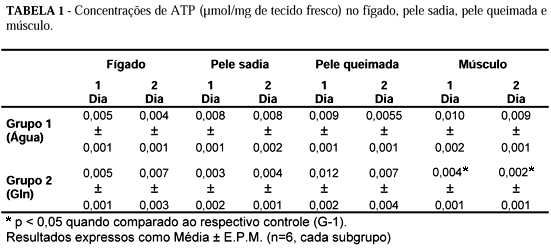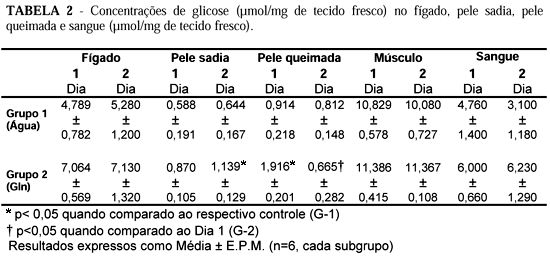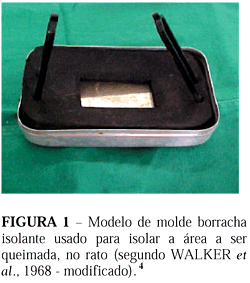PURPOSE: Investigate the metabolic effects of L- glutamine (Gln) in rats subjected to scald burn. METHODS: Twenty-four anesthetized male Wistar rats were submitted to scald burn of dorsal skin secondary to exposure to hot water (100ºC) for 10 sec (30% of body surface). Eighteen and 42h later rats were randomized to receive (by gavage) 2ml of water (G-1) or equal volume (0,5g/Kg weight/day) of Gln solution (G-2). Tissue and blood samples were collected at the end of 24h (D1) and 48h (D2) post burn for enzymatic analysis. RESULTS: Glucose concentrations were significantly increased in healthy skin in G-2/D2 and in burned skin in G-2/D1. Lactate concentrations were significantly increased in G-2/D1 in muscle (11,29 ± 1,25 mmol/g versus 7,43 ± 0,93 mmol/g - p<0.05) and in G-2/D2 subgroups in liver (7,68 ± 1,49 mmol/g versus 3,27 ±0,67 mmol/g - p<0.01) and healthy skin (5,30 ± 0,42 mmol/g versus 3,57 ± 0,38 mmol/g - p<0.05). Pyruvate concentrations were significantly decreased in G-2/D1 subgroups in muscle and liver and increased in healthy skin in G-2/D2 subgroups. ATP concentrations were significantly decreased in muscle in G-2/D1 and G-2/D2. CONCLUSIONS: The offer of Gln signals for preponderance of pyruvate use for anaerobic glycolysis in muscle. Increase in tissue lactate concentrations may be due to exogenous offer of Gln, that once transformed in glutamate leads to the activation of malate-aspartate shuttle with consequent enhancing of anaerobic glycolysis. Offer of Gln induces possible increase in glucose uptake both in healthy and burned skin. There was a development flaw of the fast adapting hyperketonemia in both groups. Exogenous offer of Gln seems not to induce alteration in urea genesis.
Burns; Metabolism; Glutamine; Rats








